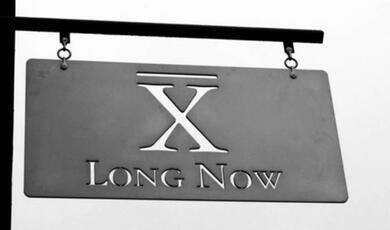As an Associate Consultant at the economic research consultancy, TBR, Martin Houghton represents TBR in London, the Home Counties and the South East. He has nearly twenty years of experience in various aspects of economic development gained in a range of organisations covering the private, not for profit and academic sectors.
In this small lecture, Martin presents the most recent work that TBR has done with the City of London Corporation. Together they have researched the rate of firm migration, firms that continue to operate but move beyond a catchment area. This component of change radically alters the picture of a City's progress, and serves to further increase our understanding.
30 January 2014
Firm Migration:
The Neglected Component of Change
Martin Houghton
SLIDE 1 - TITLE
Good afternoon ladies and gentlemen. First of all, I would like to thank Professor Mainelli for inviting me to share some thoughts and ideas with you at this prestigious event. My name is Martin Houghton and I am senior associate with Trends Business Research, a commercial practice that specialises in business and economic research. Within the context of the conference theme, I propose to present some very practical techniques that can be applied to identifying and measuring change within local economies, cities in particular.
SLIDE 2 - ACKNOWLEDGEMENTS
I would like to acknowledge the contributions of my colleagues in developing the material I will present and also to say thank you to Dr Laura Davison and her team at the Corporation for being true pathfinders and helping us refine our techniques.
SLIDE 3 – STARTING POINT
I would like to preface my comments by setting out my starting point as a practitioner of economic development, which I take as:
1. A desire to effect change, be this encouraging growth within an economy, seeking to strengthen a business sector or just measuring progress towards achieving a specific goal.
2. An acknowledgement that economies are dynamic and that the issue of change is a given. Unfortunately, the notion of an economy being in equilibrium is not one we can really accommodate.
SLIDE 4 – ALTERNATIVE PERSPECTIVES
I now wish to present two alternative perspectives of local economies and their analysis.
The traditional approach may be characterised as taking a macro view, which:
Considers the economy as an overall entity to be examined, usually by analysing official data, such as BRES, which is derived from one or more national surveys, and where the robustness of the data diminishes as the level of geography gets smaller and the level of activity gets more detailed.
Furthermore, official statistics are designed to ensure the anonymity of individual firms. As such analysis is constrained to looking at predetermined groupings such as sectors or geographic locations, local authorities for instance.
An alternative approach is to see an economy as a diverse eco-system comprising individual firms and organisations. With suitable data we can track these over time and by aggregating this we can establish how any economy is performing and changing.
SLIDE 5 – MEASURING CHANGE – TRADITIONAL APPROACH
The traditional, macro approach seeks to assess change by taking measurements at points in time and determining the differences. This can be useful for establishing headline movements in the number of firms, employment or even output. However, the nature of official statistics and the underlying survey data limits key aspects of the analysis, for example geography.
We may wish to see what this approach would say about the City of London over the period 2008 to 2012. As we can see, it looks unhealthy with a decline in firm numbers by nearly 12% and a fall in jobs of just over 1%. But more than that we cannot say. We cannot even get a direct figure for output as the City does not represent a large enough geography for official statistics. As they say it is not a NUTS3 area.
More sophisticated analysis may include the number of firm start-ups, though the level of detail may well be limited, for instance by only including incorporated firms or those registered for VAT or PAYE purposes.
Closures are less easy to detect as firms may deregister for VAT but continue to trade.
There are further challenges to consider:
Are start-ups and closures the only dynamics to consider, for example where do foreign direct investment and M&A activity feature in this?
Also, if individual firms cannot be identified how can start-ups be disaggregated from other businesses? In all, the traditional approach can generate useful headline information but is unlikely to deliver the level of detail that is needed to allow the levers of influence to be used with precision.
SLIDE 6 – COMPONENTS OF CHANGE
TBR has developed what we consider to be a more insightful approach, which we have called the Components of Change. I should say that this has only been made possible through the use of our longitudinal database that has tracked UK businesses over the last 15 years. At present we have around 3m live businesses on record alongside another 5m that have ceased trading.
Components of Change comprises:
Firm births – those that appear for the first time within a given time period.
Firm deaths – firms which disappear from the data to never reappear.
Continuing firms – these are those businesses which existed at the start of a given period and which were still trading at the end of the period. Clearly the number of these firms will not change over the reference period, but they may grown, shrunk or stayed the same.
We now come to the neglected component of change – firm migration. This comprises two elements:
In migrators – those businesses, which were previously located somewhere else and during the course of the period moved into the area.
Out migrators – obviously as firms are able to move in, they can also move out.
Thus, we are now able to consider change within an economy in a much greater level of detail.
SLIDE 7 – COC DIAGRAM
Here we see a diagrammatic representation of the Components of Change:
Starting on the extreme left
Box 1 – sets out the characteristics of the economy at a point in time, say year one, using a range of metrics such as firm numbers, employment, output, labour productivity or average firm size.
Box 2 – this identifies the number of starts ups in the period
Box 3 – captures firm closures
Now moving from top to bottom:
Box 4 – introduces in migrators
Box 5 – out migrating firms
At the centre we have Continuing firms. While the actual number of firms will not change, attributes such as employment or output are likely to either increase or decrease.
Finally, to the extreme right, we have box seven, which describes the economy at a later point in time, say year two.
While the contents of boxes one and seven could be derived from official statistics, Components of Change model introduces the added dimensions of start-ups, closures, continuing firms and in and out migrators.
SLIDE 8 – THE MATHS
This slide sets out the arithmetic used to show how the economy changes from the start to the end of the period.
This is reasonably intuitive in that we:
Start with the economy at year one
Add start ups
Subtract deaths
Add any changes from the continuing firms
Add in-migrators
Subtract out-migrators
This results in the economy at year two.
We can also show this on the diagram itself.
SLIDE 9 – TOGETHER
I would now like to share the results on one that we prepared earlier – in good Blue Peter fashion. This is taken from the work that we have recently completed for Dr Laura Davison at the Corporation of London.
SLIDE 10 – CITY
Here we see the Components of Change model for the City of London over the period 2008 to 2012. We have employed five key metrics; firm numbers, employment, output, labour productivity and average firm size.
In preparing this presentation I was unsure how easy this would be to see, so I will summarise the key points.
First, let us look at the impact of firm births and deaths. What we are doing is comparing the contents of the boxes on the horizontal axis relating to births and deaths.
The net effect of start ups and closures is that:
Over 2.5k firms were lost
These businesses provided over 22k jobs
And were responsible for nearly £2bn in output
Therefore the economy of the City of London was significantly affected by firm closures, and it generated too few new firms to address the consequential losses. We now turn our attention to net firm migration or the boxes on the vertical axis.
Firms: there were 226 more in migrators than firms that close to leave the City. While it was nowhere near large enough to overcome the negative effects of firm closures it was at least positive.
Jobs: Net firm migration meant that the City gained over 13.5k jobs. This went a significant way to redressing the loss through firm closures.
Finally economic output: over £3.5 bn in economic output was attributable to firm migration. This more than made up for the loss from firm closures.
From this we can see that firm migration had a significant impact on the City of London during the period 2008 to 2012. So while it may hitherto have been the neglected Component of Change, this was unwarranted and we believe it should change.
Before finishing it may be worth posing some final thoughts.
SLIDE 11 – DISCUSSION
Components of Change offers a new way of looking at the dynamics of a local economy. We are no longer constrained by analysing only firm births and deaths. We can now investigate both Continuing firms and migrating firms. We might even be so bold as to suggest that it represents a new paradigm for local economic analysis.
It certainly gets under the skin of local economics and allows an insightful investigation of the dynamics of change and how these might be factors in revitalising a local economy, or possibly explaining decline and suggesting possible interventions.
Furthermore we can test the effectiveness of place marketing and explore the extent to which the property offer is attractive to inward investors.
However, critics may say that intra-country firm migration represents a zero sum game with both winners and losers. Thus the City’s gains will be at the expense of many other locations.
Nonetheless, if we assume that businesses are diligent in their decision to relocate we may deduce that firms will perform better in their new location than they would have done if they had remained where they were, so economic output will increase. In fact there is some evidence to suggest that this is the case, though more work is needed.
One issue that we have not yet addressed is that of M&A activity and its impact on firm populations.
I would like to close by suggesting that the Components of Change model goes beyond only measuring the measurable but it now allows us to count what really does count – for cities at least.
© Martin Houghton, 2014


 Login
Login







